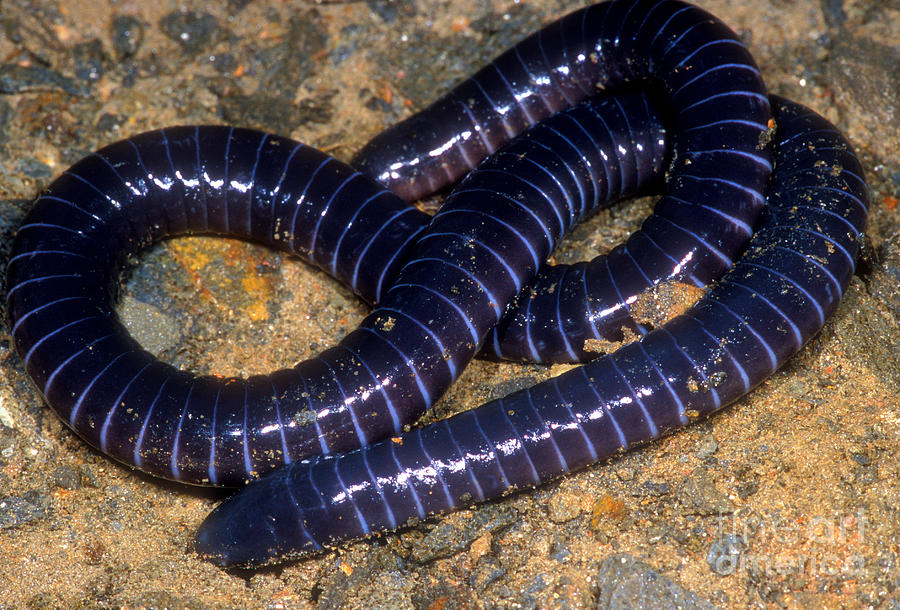 |
| A caecilian, one of two groups of legless terrestrial vertebrates |
The first, the caecilians, are amphibians which burrow in cool, moist soil to lay their eggs. A small pair of tentacles between the eyes and the nostrils helps them to explore and interpret their surroundings. They are ideal sensory organs for the dark confines where poor vision is next to useless. The other group are the snakes. They are the more recent and certainly the better known of the two groups, yet their early evolutionary history is a patchy affair.
Early snake fossils are rare, but a recent study conducted by researchers from Yale has given a good picture of what the first snake was like. Some of the findings are surprising. 'We generated the first comprehensive reconstruction of what the ancestral snake was like,' said Allison Hsiang from Yale's Department of Geology and Geophysics and lead author of the study. 'We infer that the most recent common ancestor of all snakes was a nocturnal, stealth-hunting predator targeting relatively large prey, and most likely would have lived in forested ecosystems in the Southern Hemisphere.'
Data from genomic analysis and studies of both modern and fossil snakes was used to create a family tree of the modern and extinct snake groups. This highlighted major evolutionary trends in the snake families which were used to backtrack to the ecological and anatomical characteristics of the earliest snake. 'Our analyses suggest that the most recent common ancestor of all living snakes would have already lost its forelimbs, but would still have had tiny hind limbs, with complete ankles and toes. It would have first evolved on land, instead of in the sea,' said co-author Daniel Field, a Yale PhD. candidate. 'Both of those insights resolve long-standing debates on the origin of snakes.'
 |
| An artist's impression of the earliest snake in its forest habitat |
'Primate brains, including those of humans, are hard-wired to attend to serpents, and with good reason,' said Jacques Gauthier, a Yale professor of geology and geophysics, and curator of fossil vertebrates at the Yale Peabody Museum of Natural History. 'Our natural and adaptive attention to snakes makes the question of their evolutionary origin especially intriguing.'
The new date of 128.5 million years gives palaeontologists a window of investigation to select formations of an appropriate age range to find their fossils. Additionally the ecological and anatomical predictions give us a model of what we might expect of the fossils themselves. When the fossil record does not provide, studies of modern examples can be just as revealing. The geologist Charles Lyell famously said 'the present is the key to the past.' Made within a geological context, its implications are much wide-reaching.